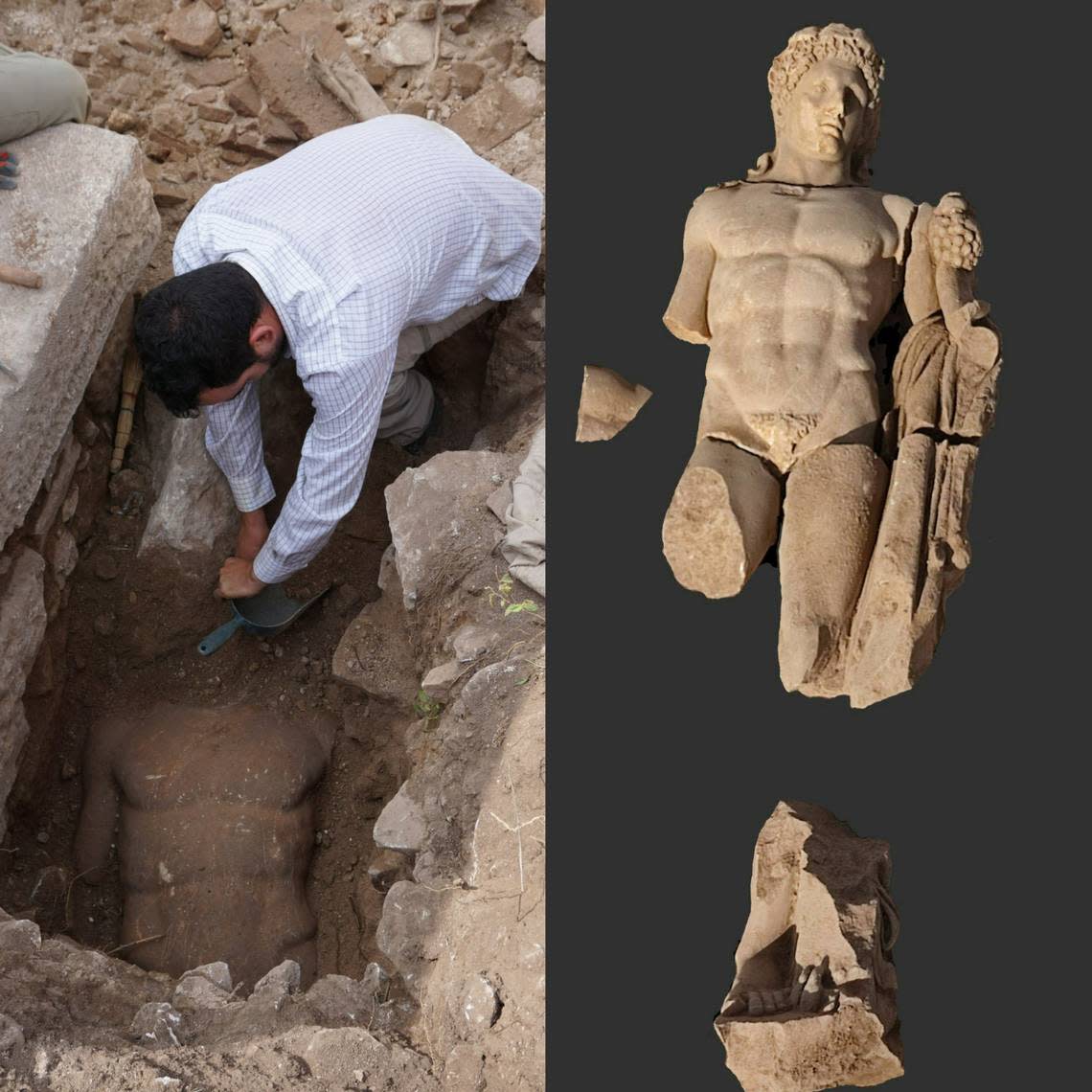Hercules statue — 1,900 years old but still with rock-hard abs — found buried in Greece
University students unearthed an ancient Roman statue of Hercules in Greece, according to officials.
Students from Aristotle University were working on archaeological excavations in Philippi when they unearthed a legendary figure, the Greek Ministry of Culture and Sports said in a news release.
With a chiseled jaw and rock-hard abs, the larger-than-life statue of Hercules – naked and youthful – emerged from the dusty ground in fragments, photos show. The statue wore a wreath crown, held a club in his right hand and had a lion hanging from his outstretched left hand, the ministry said in its Sept. 19 release.

The statue dates to the second century but was found in a town square near a richly decorated building from the eighth or ninth century, experts said. The ancient Roman Hercules statue likely adorned a Byzantine-era building – a trend among important Byzantine cities.
Hercules – then and now – remains one of the most famous figures of Greek and Roman mythology, Encyclopedia Britannica reported. He’s typically depicted as strong and moderately tall with a kind personality, prone to rage-filled outbursts.
The archaeological excavation at Philippi is a UNESCO world heritage site. The walled city’s remains – a gate, theater, temple, octagonal church and other basilicas – attest to its evolving history from a trade hub to a “small Rome” to a center for the early Christian church, UNESCO reported.
Philippi is about 410 miles northeast of Athens.
Google Translate was used to translate the news release from the Ministry of Culture and Sports.
City under siege hid stash of gold coins 1,300 years ago. It was just found in Israel
Hidden room — with ancient pink sarcophagus — emerges from sand-filled tomb in Egypt
2,600-year-old blocks of cheese found in pottery at pyramid in Egypt, archaeologists say
